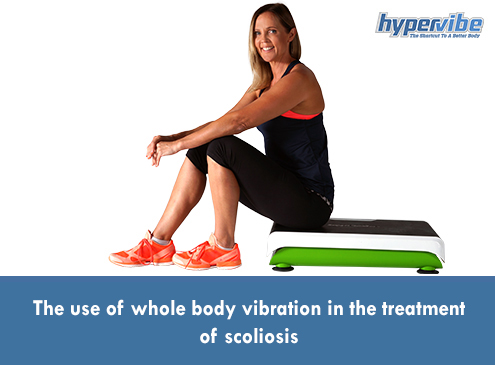
In a previous article, we talked about the main spinal deformities that affect adults and their causes and symptoms, and we showed that in some cases the treatment includes bracing, physical exercises and surgery. In today’s article we’ll take a look at some cases in which whole body vibration was used in scoliotic patients, to see whether this form of physical therapy can serve as a solution for relieving the pain and improving posture.
Scoliosis is the exaggerated lateral curvature of the spine which appears when the spine curves to a side and becomes shaped like a letter C, or when it curves in two different regions and becomes shaped like the letter S. It’s not a disease but it is considered a medical issue that may require invasive treatment.
When the scoliotic spine is viewed from the front, instead of appearing to be straight, like a healthy spine, is looks curved. The curvature can be more or less severe and can affect the alignment of the shoulders and hips, causing gait problems, poor posture, pain in the legs and lower back and excessive strain to the back and lower body muscles.
Given that whole body vibration is used in other conditions that affect the muscles and bones, and contributes to the strengthening of these tissues and to improved flexibility and posture, it may also be a treatment option for scoliotic patients.
So we’ll start with a study published by Asian researchers in the Osteoporosis international journal, which investigated the effects of WBV on bone density and quality in girls with adolescent idiopathic scoliosis. The randomized trial included 149 patients between 15 and 25 years old, with low bone mineral density, who were randomly assigned to a vibration or control group.
The vibration group performed WBV exercises at high frequency and low amplitude for 20 minutes per day, 5 days a week, for 1 year. The control group received just medical observation, with no other treatment. Results showed that whole body vibration was effective in improving the bone mineral density in the lumbar spine and femoral neck.
Vibration therapy may be an effective solution for reducing back pain and muscle stiffness and improving posture in patients affected by scoliosis. As shown in this article, 10 WBV sessions at a frequency of 25-35 Hz and low magnitude were helpful in improving the flexibility of the spine in a scoliotic patient, improving the extension, lateral flexion and rotation. The impairment caused by scoliosis decreased from 6% to 2%, and the alignment of the shoulders improved.
Although more studies on the effectiveness of vibration therapy in scoliotic patients are needed to determine whether this form of exercise is a viable solution for all types of scoliosis, WBV appears to be effective in strengthening the muscles and loosening the tight tissues, as well as in strengthening the bones, improving flexibility and posture in these patients.
Have something to add to this article? Comment below or join our Facebook community and share your thoughts with us!

Updated on: 08.09.2021 The lymphatic system is involved not only...

Stress can make you gain weight – we’ve heard this...

Various theories exist to answer this question. As you will...

Both rebounding and jumping on a trampoline are excellent ways...

The health benefits of using vibration plates to burn fat...